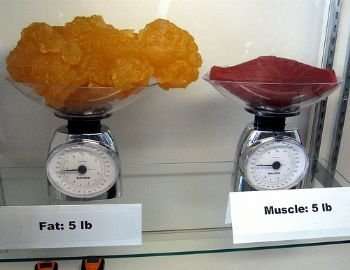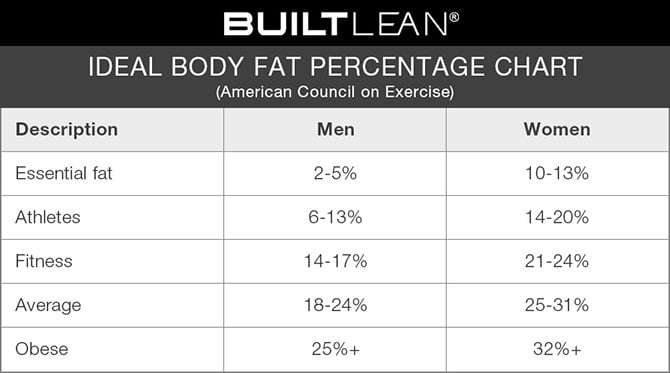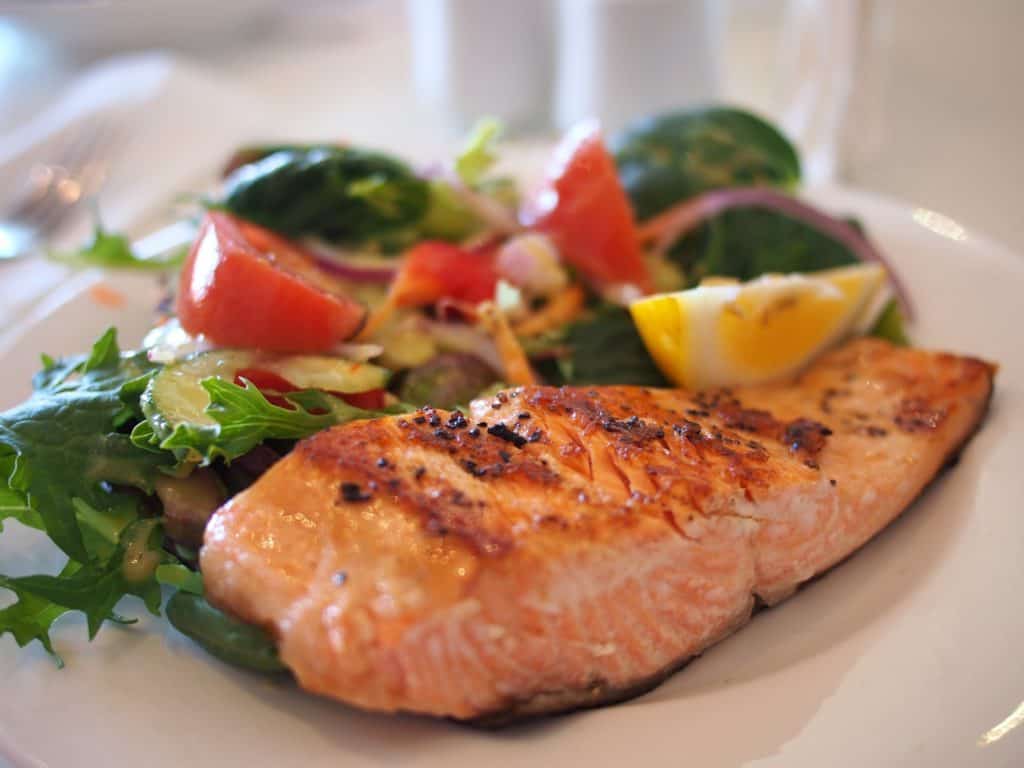8 Myths About Fat
We live in a world that is bombarded with nonsense and mischaracterizations nearly everywhere you look. Blogs and other outlets push topics to sell their products, not the truth. Sensationalism is an actual thing, you know. The mob mentality is strong, and business seems to be good.
Ignorance is prevalent today in so many facets of life. Sadly, it is huge in the fitness world as well. ‘Bro-science’ and trendy diets are full of half truths (if that). There are no long term studies on how some of the recent fitness trends could bode for people in the future if they stay with them.
With that in mind, let’s clear up some of more prevalent myths surrounding fats, both dietary and the stuff we carry around with us each day.
Myth 1: All fat is equal
There was a time that people believed that all fat was the same, regardless of whether it was labeled as saturated, unsaturated, or trans fat. Science told us that fats were bad for us and to stay far away.
Today, we know differently. Some are now considered good, others bad, and the remaining fats falling somewhere in between. Scientific backed studies have proven that not all fats are created equal, and that they all have different functions they perform within the human body:
Trans Fats

Trans fats are essentially banned in the US after research has shown that they are harmful, but that doesn’t mean they still can’t be found. These fats come from hydrogenation. While some manufacturers don’t use them anymore, certain states/jurisdictions have banned them entirely, and the FDA has banned them, they can still be found in some fried foods if partially hydrogentated oil is used to cook them.
Why are they banned? Because there is no known nutritional benefit they provide to balance out their potential to actually harm you.
Trans fats increase levels of LDL (bad cholesterol), decrease levels of HDL (good cholesterol), and other terrible things such as:
- Creates inflammation
- Contribute to insulin resistance
- Higher risks of heart disease
They should be avoided as much as possible.
Saturated Fats
Saturated fats are slightly better than trans fats, but aren’t considered ‘good.’ Eating too many can cause levels of harmful LDL to rise. Additionally, they can cause an increase in risks for:
- Heart disease
- Weight gain
Most of the negative press actually comes from the idea that saturated fats can raise LDL, like mentioned before. Even that is misleading. They can, however, also raise the level of HDL and change LDL from one form to another.
These fats come mainly from meats and dairy. If you have a diet rich in protein, you are probably eating these fats regularly.
Unsaturated Fats
Unsaturated fats are considered ‘good fats.’ They come from foods like olive, peanut, and canola oils as well as avocados, nuts, and fish.
These types of fats can do wonders for the body such as helping reduce the effects of arthritis, the potential for heart disease and stroke, and the risk of dementia, among other positive impacts.
Try replacing trans fats and saturated fats with unsaturated as much as possible.
Need some help?
Shape Success, Live Exceptionally
Hit that button, and get started today.
Myth 2: Fat is the enemy
How many times have you heard people say that fat is the enemy?
Or that fat is an indicator of overall health?
Truth is, fat itself isn’t terrible. Like anything, it is OK in moderation. Fat is one of the three major macronutrients and is necessary in some critical bodily functions. In fact, your body uses certain dietary fats to help absorb vitamins and minerals, among other functions.
The body also can use fats for energy. That is the entire idea behind Keto, after all. When your body has no access to it’s usual energy source (carbohydrates), it begins to burn fats for fuel. Whether it uses the fats you are consuming or the fats your body has stored depends directly on diet, and how much you are consuming.
As a side note, lots of people say that they feel especially energetic when ketosis actually kicks in, because fat contains far more energy per gram than carbohydrates or protein does (9 calories per gram in fat vs 4 calories per gram in carbs and protein).
Myth 3: The scale is an accurate representation of how much fat you are carrying
Ah, yes. The belief that ‘what a scale says is an accurate depiction of total bodily weight in fat’ argument. It is similar to the ‘BMI is a great indicator of what are healthy weights’ concept.

In reality, the scale, much like the BMI system, is highly flawed and only shows you a one dimensional/one size fits all depiction of whether you are within healthy limits or not. Even the scales that try to tell you how much lean vs non-lean mass you are carrying, are wrong. Without a better measuring mechanism, scales can only show you how hard gravity is pulling you down (weight) and estimate lean mass.
One pound of muscle is much smaller than one pound of fat. While they weigh the same, fat takes up more space per pound. People with high levels of muscle mass can easily weigh just as much, if not more, than those that are truly overweight or obese and take up far less space.
If you want a more accurate reading of what percentage of your body is fat, use calipers (slightly more accurate) or visit a displacement chamber (most accurate). Don’t rely on the scale to tell you your progress.
Myth 4: If you stop exercising, muscle will turn to fat
This one is laughable. Muscle and fat are polar opposites. You cannot turn muscle into fat by simply not exercising. Instead, your body will reduce how much muscle it holds on to because it just doesn’t need it anymore.
Muscle has high energy costs associated with it, so why would your body hang on to it if it doesn’t need the mass?
At the same time, when most people stop exercising they don’t change your eating habits. The body doesn’t suddenly reduce the amount of food that it wants to consume, just because it is doing less activity. Human bodies like routines.
Doing less activity while eating the same amount will inevitably cause weight gain, which is probably where this myth comes from.
Myth 5: Exercise can turn fat into muscle
See #4. You cannot change fat into muscle or muscle into fat. Instead, you will burn off your fat reserves when you work out, as long as you are eating less than you are burning, calorie wise. The growth of new muscle and the reduction in fat gives the illusion that you are turning one into the other.
Myth 6: Eating too much fat will make you fat
I think that this myth has been blown out of the water by diets such as keto where the entire concept is to eat mostly fats and some proteins, while avoiding carbohydrates.
In reality, if you stay below your caloric output you will lose weight, regardless of if you are on keto and eating tons of fats/proteins or tracking macros and eating a bit of everything.
The key is to remain equal to or less than what you are burning, calorie wise, each day. If you do that and maintain a good exercise routine, you won’t put on extra fat (barring medical issues, of course).
Contrary to popular opinion, if you stay under what you burn each day and exercise, you will lean out quite a bit, regardless of whether you are eating a high fat diet or not.
Myth 7: A low-to-no fat diet is good for you
Is this one still alive?
Your body needs to consume certain types of fats each day for various critical functions. Fat plays an enormous role in how your body operates, so reducing how much you take in each day below a certain threshold is a bad idea for most people.
Not eating enough fat can lead to a whole host of problems:
- Hormonal imbalances
- Dry eyes and skin
- Fatigue
- Concentration and focus issues
Eating a diet rich in nuts, beans, and meats will bring in enough fats to avoid any issues associated with fat deficiencies.
Myth 8: The lower your body fat percentage, the better
This one is incredibly prevalent, even today. For some reason some people seem to think that getting as close to zero as possible is a good thing. In reality, our bodies need a certain level of fat to maintain proper functions.
The lowest anyone should try to go with body fat percentages, according to the American Council of Exercise is:
- Males : 2-5%
- Females : 10-13%

Dropping below those recommended body fat percentages can cause serious issues.
Even getting to those percentages is tough, though. Today, most men average around 18-24% and most women average between 25-31% across the board. Professional bodybuilders at peak showtime still maintain about 3-5% generally. Even the ripped dudes you see in movies are generally somewhere between 10 and 15%, depending on genetics.
Professional athletes and others that manage to get to such a low level of body fat don’t maintain levels that low for long periods of time, or they risk liver and kidney damage, as well as those issues associated with low dietary fat intake.
In conclusion
Fat isn’t a bad thing. It’s a necessary part of a life. Avoiding fat in your diet can bring in just as many problems as eating too much or the wrong kinds of fat. It is all about moderation.
Additionally, carrying body fat around isn’t a bad thing as long as you keep in a good ratio compared to your lean mass. As a general rule,issues start popping up after you pass a certain body fat percentage in either direction.
When people tell you that fat is the enemy, help them out a bit and crush these common myths.
Let Us help You Out
At CONDITIONerd we are here to help you achieve better physical and mental health through exercise. Check out the plans we offer to our customers and see if you could benefit from working with our team. And if you have questions, you can always contact a CONDITIONerd team member.
Personal trainers, like those found here, can help guide you on your pathway towards reaching your fitness goals, whether that is getting bigger, stronger, faster, more lean, or just generally feeling better.
We can get you setup with a periodized workout plan, supplement information, and advice on nutrition to help you reach your goals.
The only thing you need is some motivation and a willingness to change some old habits.
Get into contact with us to find out what membership is right for you. In a CONDITIONerd program, you’ll be surrounded by others who can help you to get where you want to be.
Generally, our clients start to see some pretty awesome changes in 2-3 months time, some sooner.

